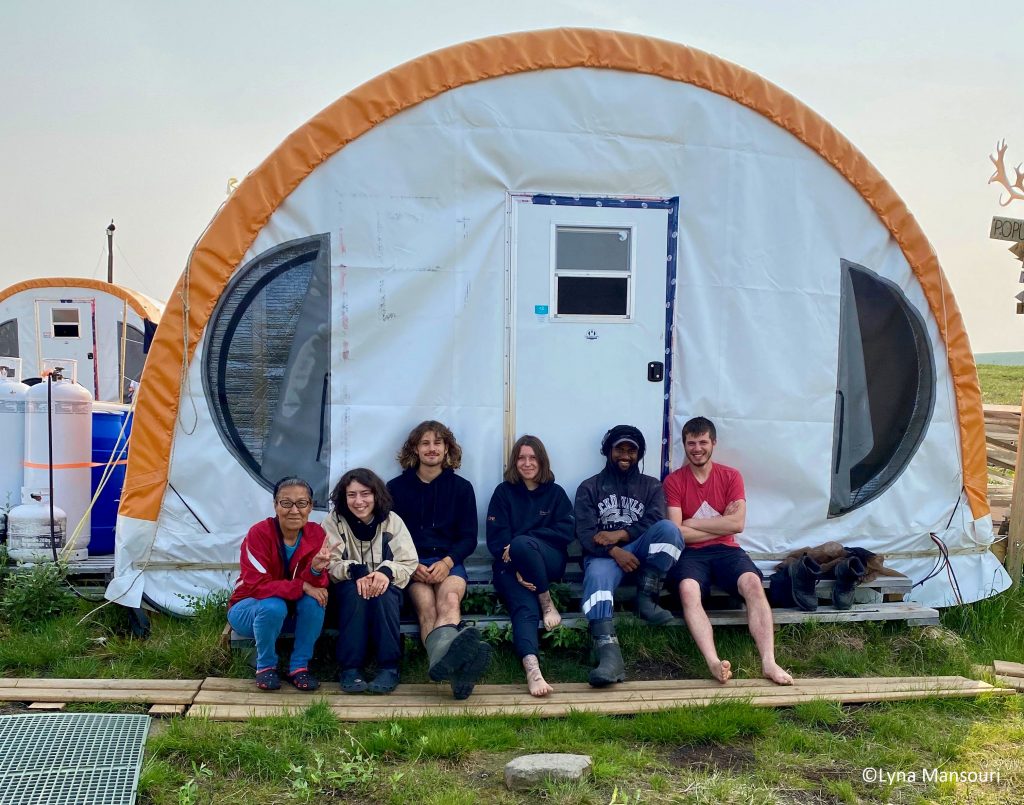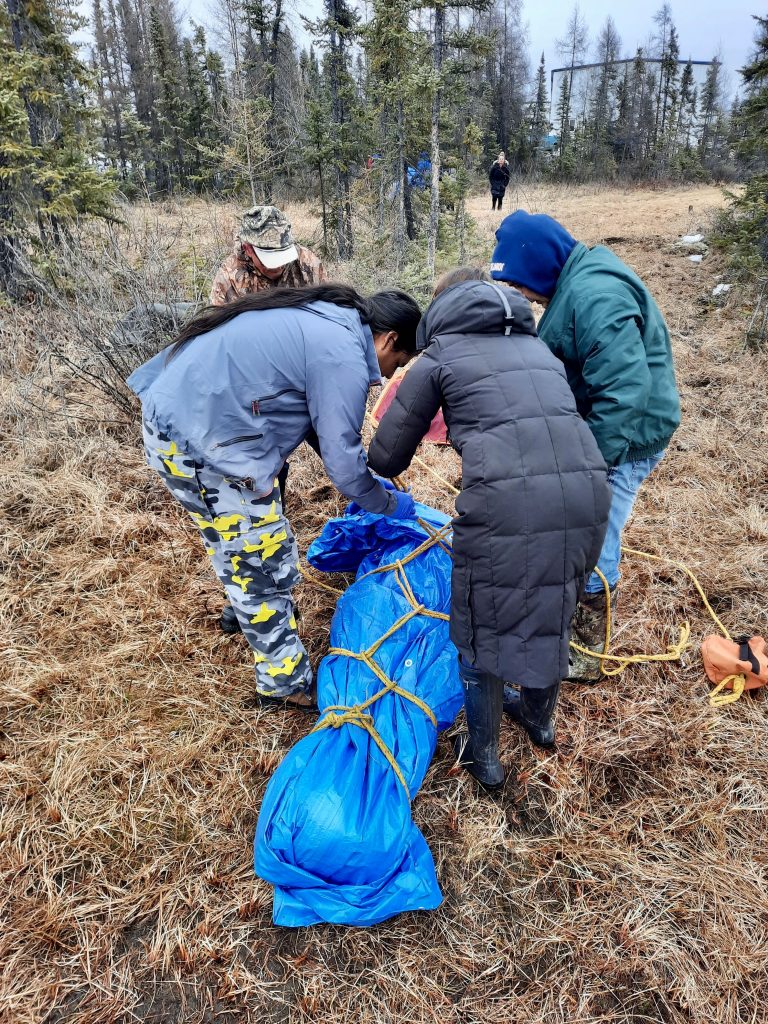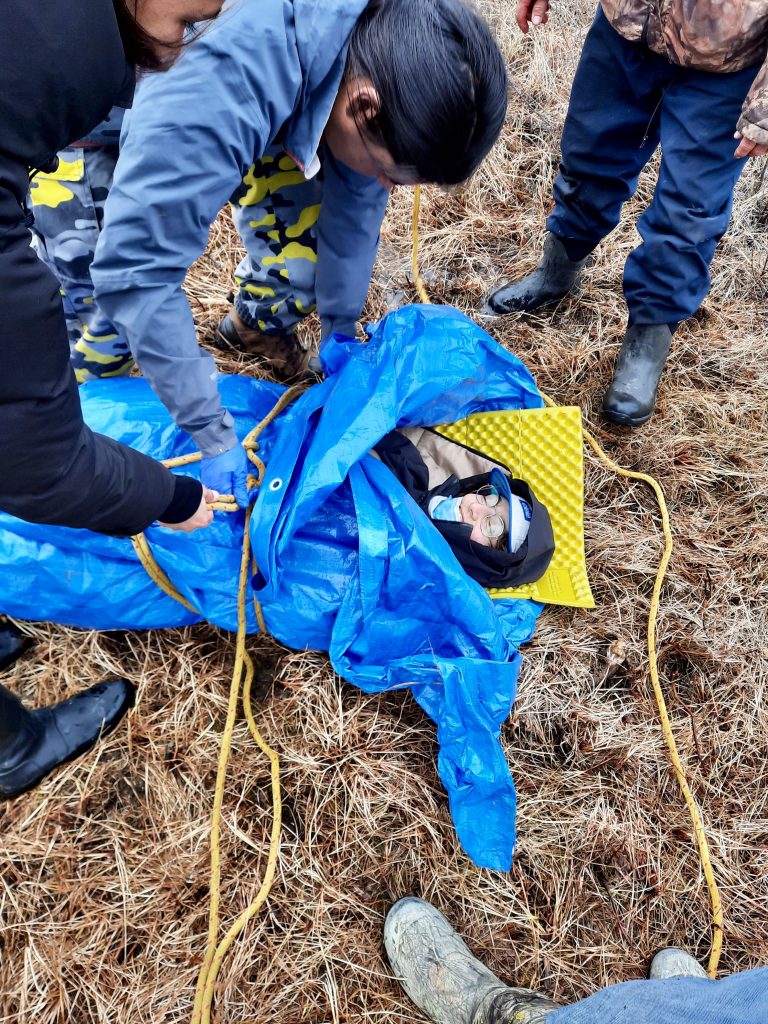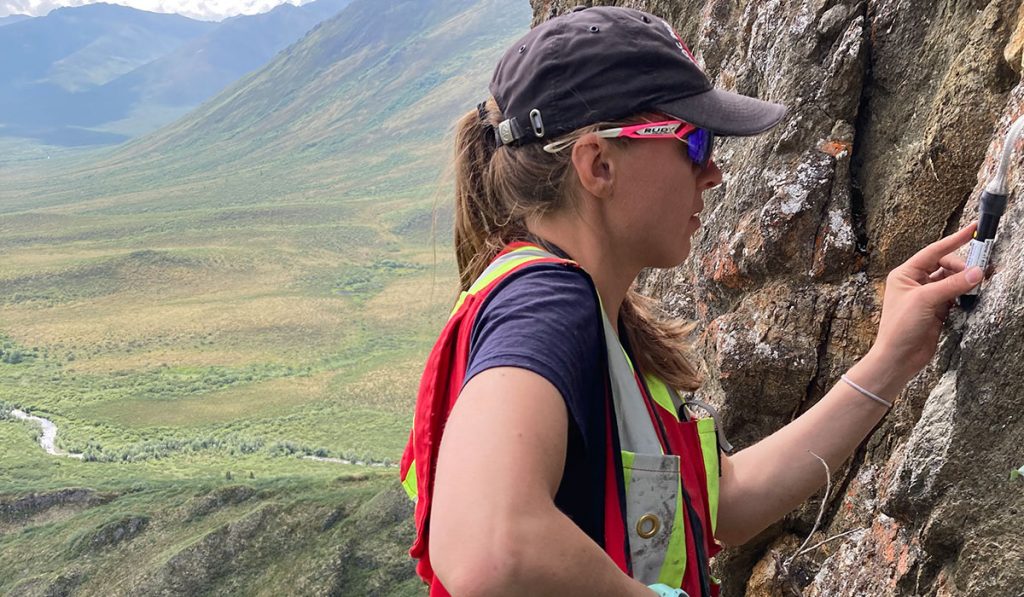The November PermafrostNet seminar is being presented by Charles Gauthier on Optimizing CLASSIC’s Soil Carbon Parameters using Bayesian Optimisation and Observational Datasets.
Date: 30 November 2022
Time: 13:00-14:00 Eastern Time
Location: Zoom (details are posted in our Teams site).
NSERC PermafrostNet and ArcticNet sign MoU
NSERC PermafrostNet is pleased to announce this partnership to further Arctic science: We have signed a Memorandum of Understanding (MoU) with ArcticNet. This MoU between ArcticNet and NSERC PermafrostNet will promote northern research and culture while supporting the exchange of knowledge and fostering the creation of synergies in Arctic research between researchers, institutions, communities, governments, and the private sector.
The MoU was signed on September 16th, 2022.
“NSERC PermafrostNet connects academics and partners for boosting Canada’s ability to adapt to permafrost thaw. As a strategic partnership network, we also work toward better connecting differing perspectives and organizations in the long term. Partnering with ArcticNet helps build on existing strengths and better contribute to an inclusive Arctic research ecosystem.” – Stephan Gruber, NSERC PermafrostNet Scientific Director
“Permafrost research has always been a core research topic for ArcticNet. We are keen to continue working closely with PermafrostNet to advance knowledge on permafrost dynamics on natural and built systems across the North. Together, we aim to leverage assets, train the next generation of Arctic specialists, and expand research opportunities.” – Christine Barnard, ArcticNet Executive Director

About ArcticNet
ArcticNet is a Network of Centres of Excellence of Canada that brings together scientists, engineers, and other professionals in the human health, natural and social sciences with partners from Inuit organizations, northern communities, federal and provincial agencies and the private sector to study the impacts of climate and socio-economic change in the Canadian North.
Seminar – Effective data sharing: Achievements and challenges creating the Canadian Permafrost Electrical Resistivity Survey Database.
The October PermafrostNet seminar is being presented by Teddi Herring on Effective data sharing: Achievements and challenges creating the Canadian Permafrost Electrical Resistivity Survey Database.
Date: 26 October 2022
Time: 13:00-14:00 Eastern Time
Location: Zoom (details are posted in our Teams site).

New Seminar Coordinator

Taking over from Charles Gauthier as our new network seminar coordinator is Zakieh Mohammadi. Zakieh is a PhD student at the University of Calgary under the supervision of Professor Jocelyn Hayley. During her PhD studies, she will be working on developing a framework for evaluating and estimating the thaw-settlement behaviour of permafrost sediment.
Fieldwork reports: Charles Gauthier, Rose Lefebvre, Lyna Mansouri and Oliver Sonnentag
Trail Valley Creek Research Station by Charles Gauthier
In early June, I had the chance to be part of a team of scientists heading to the Trail Valley Creek Research Station. Located a 30-minute helicopter ride away from Inuvik, NT, Trail Valley Creek supports many different long-term projects. My colleague, Vincent Graveline, and I were there for two weeks during which our goal was to launch weather balloons as part of Vincent’s MSc research on planetary boundary layer dynamics. Attached to the balloons were detachable probes equipped with several instruments reading pressure, altitude and, most importantly, air temperature. Our goal was to observe the height of the planetary boundary layer in spring. The depth of the planetary boundary layer affects the land-atmosphere interactions, and its depth varies depending on land cover and atmospheric conditions. With the boreal tree line shifting northward, information on the planetary boundary layer over the tundra and a nearby forest stand will help to better understand the consequences of boreal treeline shifts on tundra-atmosphere interactions.
A typical day could be split in three parts: the launch of the balloon, the wait for it to climb to a specific, pre-determined altitude and the retrieval of the probe. We walked over 70 km in the tundra, a radio receiver in hand looking for the white probe the size of a styrofoam cup with a single flashing LED light. This research trip allowed me to visit a changing arctic tundra research site where permafrost is rapidly thawing, a sight that I don’t normally see while modeling permafrost change from the comfort of campus. Science aside, the landscapes, the berries and the sneaky ptarmigans were worth all the soreness in our legs!
Field work report by Charles Gauthier.
Scotty Creek Research Station by Rose Lefebvre
In August, I went to the Scotty Creek research station in the Northwest Territories. As a modeler, being able to go to the field was a great opportunity: it allowed me to better understand one of the sites I am trying to model.
The goal of my project is to simulate the climatic conditions of higher latitude regions, often underlain by permafrost, in a more accurate way. To achieve this, I will be including mosses in CLASSIC, the Canadian Land Surface Scheme Including Biogeochemical Cycles, as a plant functional type. Seeing Scotty Creek improved my understanding of just how much mosses are important in northern regions.
I was in Scotty Creek to help with a drone data collection project: I climbed an eddy covariance tower to ensure there was always someone who could see the drone, while the drone pilot was back in camp. This allowed me to see the drone above the trees.
I also took active layer depth measurements around the eddy covariance tower. This allows us to monitor permafrost thawing, which happens rapidly at Scotty Creek. We can see the impact it has on trees at the limit between the forested permafrost plateaus and the permafrost free bogs: they start to tilt from the instability of the ground.
Field work report by Rose Lefebvre.

Engaging the Inuvik community by Lyna Mansouri
For several scientists and students, the highlight of research is fieldwork. Sometimes, to produce high-quality data in permafrost-related research, the study sites can be isolated. Now, they are not only remote because they are north (from a southerner’s perspective), but rather because they are secluded from the communities. For instance, the Trail Valley Creek (TVC) research station is situated north of Inuvik, NWT, in the middle of the tundra. As field season is extremely busy and dense, the researchers rarely have time to exchange and connect with local communities. They live and work out of the research station for most of the time they spend in the region. This poses the issue of creating a gap between researchers and community members. Indeed, it feels counterintuitive since research’s primary goal is to inform decision-making and produce tools to build resilience for local communities.
In the past year, thanks to funding from Future Skills Center, NSERC PermafrostNet, IVADO and other sources, the situation is in remediation. During our fieldwork in TVC, my colleagues and I had the opportunity to work with several members of the community. One of our colleagues, Camellia, planned a marvellous barbecue with family and friends from Inuvik and, at last, scientists were stepping out of the research station and into building relationships with folks from the community. These kinds of activities and partnerships at the sites are concrete steps towards crafting research projects for, and with, the community and ultimately bridging the gap between scientists, students, and community members.

Finalizing a “nested” Arctic tundra flux set-up by Oliver Sonnentag
After several years of planning, and delayed by the Covid-19 pandemic, the Sonnentag lab completed a “nested” Arctic tundra flux set-up (landscape > ecosystem > plot) at Trail Valley Creek Research Station near Inuvik, NT. The flux set-up comprises three eddy covariance (EC) towers, and automated and manual chamber systems. The 20-m landscape EC tower measures net carbon dioxide, methane, and latent and sensible heat exchanges between the terrestrial-aquatic landscape (including extensive shrub patches) and the atmosphere. Given prevailing wind characteristics, nested within the landscape flux footprint (i.e., the temporally varying source area) are a 5-m and a 7-m ecosystem EC towers, one “seeing” fluxes originating from polygonal tundra, or, depending on wind direction, a small lake, and one “seeing” fluxes originating from mineral upland tundra, respectively. Nested within the ecosystem flux footprint (mineral upland tundra) is a custom-made chamber system to measure plot-scale net carbon dioxide and methane exchanges. The system comprises 18 automated chambers (nine ‘transparent’ and nine ‘opaque’ chambers), each with three replicates for three distinct plant communities: dwarf shrub, tussock, and lichen cover. Manual chamber measurements are collected from additional plant communities and land cover types (e.g., polygonal tundra and lakes). The chamber measurements are complemented by ancillary measurements of air and soil temperature, photosynthetic photon flux density, active layer depth, plant community composition, spectral characteristics, greenness, and soil moisture, temperature, and oxygen. Additional measurements to understand the underlying biogeochemical processes governing the carbon dioxide and methane sink-source behaviour: soil physical-chemical properties and gas profile dynamics, isotopic signal of d13C in soil carbon dioxide and methane, soil pore water and lake nutrient concentrations, quality and microbial degradability of aquatic dissolved organic matter and microbial community composition. The goal of these comprehensive observations is to shed light on how tall shrub encroachment affects vegetation diversity and associated surface-atmosphere interactions across scales in the Southern Arctic ecozone of western Canada.

Community training workshops in the NWT: Yellowknife (2 – 13 May) and Inuvik (6 – 9 September) by Oliver Sonnentag
The Sonnentag lab hosted two community training workshops this summer. With 15 (Yellowknife) and 10 participants (Inuvik), both workshops were well attended. Primarily funded through the Future Skills Centre, the first week of the workshop in Yellowknife included safety certifications for wilderness first aid, fall protection and wildlife awareness. The second week focused on hands-on training in micrometeorological instrumentation and scientific instrumentation maintenance, used in combination with traditional experiences and perspectives.
Presentations, practical sessions and discussions were led by industry, academic, territorial government non-governmental organizations and Indigenous government representatives. The workshop in Inuvik was hosted through Sonnntag’s involvement in an IVADO-funded project on artificial intelligence, biodiversity and climate change. Presented by ASPECT-drone solutions, the focus of the workshop was on preparing participants for the Small Advanced Exam required by Transport Canada for advanced drone operation.





Crushing snowbanks could help to preserve permafrost and keep northern communities connected
Permafrost subsidence is a big problem for northern roads. It can reduce their stability, cause cracks to appear, and if left unchecked may even render the roads inoperable.
Snow is an excellent insulator. Like a thick down jacket, it traps air in the pockets between the accumulated snowflakes, protecting the ground from cold air temperatures. When snow becomes compacted — by piling it up beside a road, for example — the air is squeezed out and the properties of the snow change to allow heat through more easily, like a thin windbreaker.
The goal of Patrick Jardine’s research is to improve the longevity and sustainability of infrastructure in permafrost regions by developing active snow management techniques for the purpose of reducing thaw subsidence along highways.
Earlier this year Pat took Science Borealis‘ Pitch and Polish blog writing course and you can now read his full blog post – Crushing snowbanks could help to preserve permafrost and keep northern communities connected on the Science Borealis blog.
Pat is a Master’s student studying physical geography at Carleton University under the supervision of Professor Chris Burn.
Tiny plants could be key to improving climate change predictions
Scientists do not always account for mosses, simple, small and ubiquitous plants in their climate models, even though doing so could help us better understand climate change.
Most plants are “vascular”. This means they can control the water entering or leaving their tissues via stomata, tiny pores in leaves and, sometimes, stems that allow gasses to enter and exit the plant. Mosses, however, have no stomata.
The goal of Rose Lefebvre’s Master’s research is to include mosses as a vegetation type in Environment and Climate Change Canada’s Canadian Land Surface Scheme Including Biogeochemical Cycles climate model – called CLASSIC for short.
Earlier this year Rose took Science Borealis‘ Pitch and Polish blog writing course and you can now read her full blog post – Tiny plants could be key to improving climate change predictions on the Science Borealis blog.
Rose is a student at the Université de Montréal under the supervision of Dr. Oliver Sonnentag (Université de Montréal) and Dr. Joe Melton (Environment and Climate Change Canada). Her research focuses on using the Canadian Land Surface Scheme including Biogeochemical Cycles model (CLASSIC) to reproduce the climatological conditions at Scotty Creek, in the Northwest Territories.
MSc in community-based monitoring of landscape change
Posted: June 15, 2022
Anticipated start: January or September 2023 (flexible)
Supervisory team: Trevor Lantz
Permafrost landscapes are undergoing rapid transformation, impacting infrastructure, hydrology, vegetation, and local livelihoods. In many regions the rate of change is so rapid that maintaining accurate inventories of permafrost disturbances presents a significant challenge.
This MSc project focusses on developing a protocol that will enable individuals such as park rangers, highway inspectors, hunters, and utility maintenance crews to record observations of anomalous conditions. The first part of this project will involve a review of existing observer-based networks and their suitability for qualitatively documenting permafrost conditions. The results of this review will be used to design a pilot protocol and web-reporting interface for recording anomalous permafrost conditions.
Interested applicants should hold an undergraduate degree in geography, environmental science, or a related field, and have a solid foundation in geomatics. Applicants must be self-motivated, have strong communication skills, the ability to manage multiple tasks, and be willing to travel to remote locations, potentially for extended periods. Preference will be given to students with previous experience working in northern communities and a background in GIS.
Stipend funding of $21,000 per year is guaranteed for two years, and support for travel to communities in the Western Canadian Arctic is also in
place.
For more information on this project, please contact tlantz@uvic.ca.
The changing landscape of permafrost data
Permafrost is changing as Earth’s climate warms. Across northern Canada, the effects are already apparent: slow-moving landslides threaten highways, buildings are sinking and collapsing, and traditional food sources are threatened. The annual cost of permafrost thaw in the Northwest Territories has been estimated at $51 million.
Because permafrost occurs underground, data about permafrost are difficult and costly to collect. Once they’ve drilled a borehole, scientists insert instruments to record ground temperatures at regular intervals, sometimes collecting measurements every hour. This is exactly the kind of information permafrost modellers need. However, once these data have been used for a particular experiment, they might not be shared in a way that is easily accessible for other researchers. In fact, they may not be shared at all.
In Whitehorse, Panya Lipovsky, a surficial geologist with the Yukon Geological Survey, has been working to create a permafrost database for the Yukon. The effort is part of a Canada-wide trend to make historic permafrost datasets more available.
Earlier this year Nick Brown took Science Borealis‘ Pitch and Polish blog writing course and you can now read his full blog post – The changing landscape of permafrost data on the Science Borealis blog.
Nick Brown is the NSERC PermafrostNet data scientist, where he develops tools to support permafrost simulation and data handling and also promotes the adoption of standards for permafrost data
Why frozen mud is a technical challenge for climate scientists
“So, it’s frozen mud?” my roommate asks when I try to explain my research topic to him. Since starting his own research in quantum physics, he has mastered the art of simple idioms. Perks of the trade, I suppose.
This frozen mud, however, covers half of Canada’s land mass. It is the soil on which many Indigenous communities are built, and it is thawing at alarming rates. With northern latitudes warming twice as fast as the rest of the world, scientists are racing to understand permafrost dynamics. Having this knowledge can help us ensure that Canada is equipped to face the coming climate crisis………..
Earlier this year graduate student Charles Gauthier took Science Borealis‘ Pitch and Polish blog writing course and you can now read the rest of his blog post – Why frozen mud is a technical challenge for climate scientists on the Science Borealis blog.
Charles is a student at the Université de Montréal under the supervision of Dr. Oliver Sonnentag (Université de Montréal) and Dr. Joe Melton (Environment and Climate Change Canada). His research aims to reduce uncertainty in predicted soil carbon dynamics.
Permafrost Thaw and our Climate
Research Helping Canada’s North Plan for the Future
Collaborative solutions like the ones developed by NSERC PermafrostNet represent a shift toward a new generation of researchers who approach problems in a holistic way.
Read more about the permafrost research being conducted at Carleton University in this 3 minute article.















